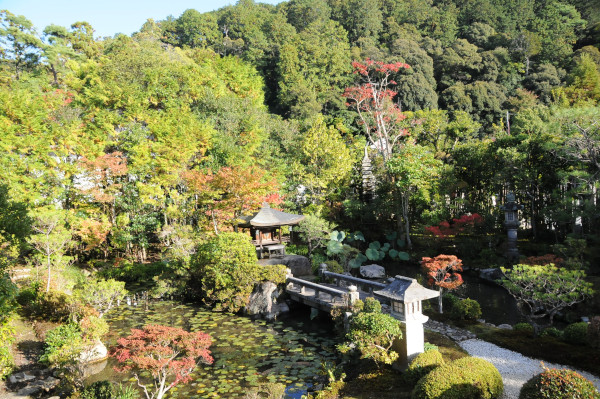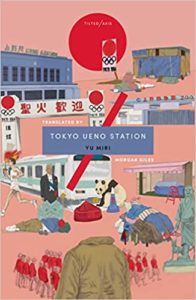Daigo-ji lies a bit off the beaten tracks in Fushimi, but for those who like everything super-sized, this is the perfect place to go in Kyoto: On the precincts of 300 hectares (mostly forest of Mt. Daigo) 80 different species of birds can be found, 1000 cherry trees, and more than 100,000 artefacts are kept in the temple’s museum. Many of its 80+ buildings are designated as National Treasures, and the 5-story pagoda is the oldest building in Kyoto. I went a day after it snowed in Kyoto, which makes for especially beautiful photos. The road to Kami-Daigo was still closed, but I probably wouldn’t have attempted it anyway, it’s too long a hike…

This temple dates back to 874 when the monk Shobo (posthumously named Rigen Daishi) built a small hermitage close to a well on Mt. Daigo. This part of the temple near the mountain top is nowadays known as Kami Daigo, and three successive emperors donated buildings there. Emperor Daigo moved here after his retirement, and after his death (when he was named after the temple in which he had lived for many years), the pagoda was completed at the foot of the mountain (Shimo Daigo) in 951 in his honour.
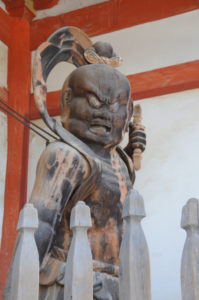
Unfortunately, the 15th-century Onin War destroyed most of the buildings of Daigo-ji. However, since the temple’s head priests managed to maintain good relationships to whomever was in power at the time, the temple was rebuilt several times and continued to grow through the centuries. When Hideyoshi came to power, Daigo-ji received his special patronage. He restored the Sanboin (originally from 1115) and had 700 cherry trees planted.
In the Edo period, Shugendo yamabushi began practising at Daigo-ji, and to this day, part of their training and worshipping consists of long, meditative walks around the temples’ precincts. The temple’s prosperity declined during the anti-Buddhism movement of the Meiji period. However, dedicated head priests could preserve the precincts and the numerous temple treasures until today.
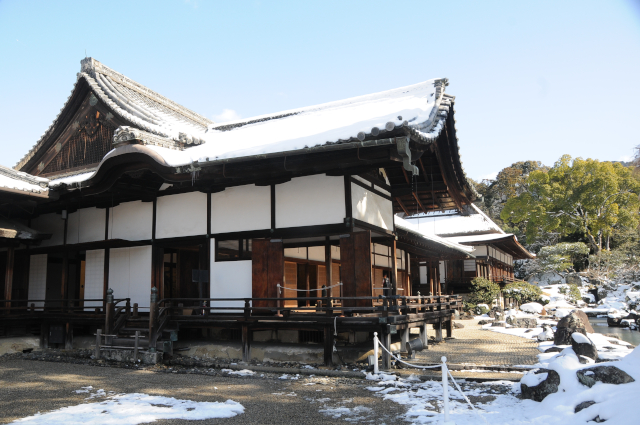
As mentioned above, the vast precincts of Daigo-ji can roughly be divided into three parts. The Sanboin-Reihokan area lies directly behind the Somon main gate of the temple. The Sanboin on the left side is the former residence of Daigo-ji’s head priests. Just inside the gate is an enormous cherry tree called “Taiko Shidarezakura” that is 160 years old. The Sanboin itself was founded in 1115, but the current building dates back to 1598, when it was reconstructed and enlarged for Hideyoshi’s famous hanami party. The beautiful Karamon gate with golden imperial chrysanthemums and Hideyoshi’s own paulownia crest on black lacquer is a National Treasure.

So is the Omote Shoin, the main drawing room of Sanboin. It is constructed in three parts, each one a bit higher than the previous; the lowest part can be used as a Noh stage when the mats are removed. From the Omoto Shoin, the whole garden can be seen, a masterpiece of Momoyama garden designs, created by Hideyoshi himself. The main hall of Sanboin with a Buddha statue and statues of Kobo Daishi and Rigen Daishi that lies a bit to the back is not usually open to the public.
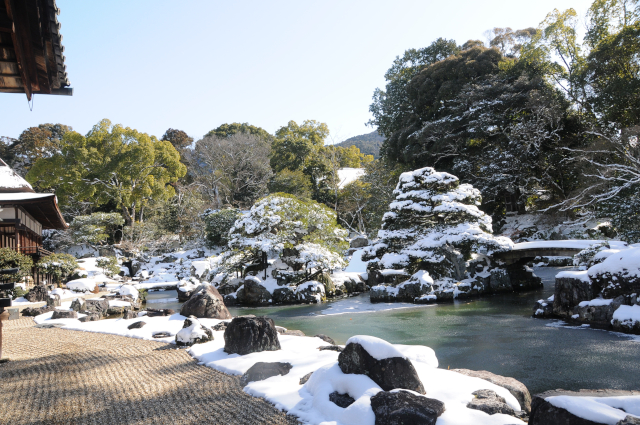
Opposite the Sanboin lies the Reihokan, the temple’s museum. Opened in 1935, it is home to over 100,000 Buddhist statues, paintings, and other artefacts. Around 75500 National Treasures are collected here and trace the history and culture of Daigo-ji back to its beginnings. There are special exhibitions in spring and autumn.
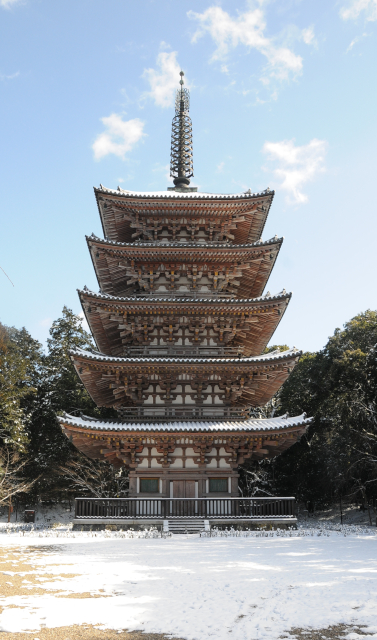
On passing through the Niomon Gate (erected 1605; the Nio statues are from 1134), visitors enter the Garan or main temple area. Here lies Daigo-ji’s Kondo or main hall, with a statue of Yakushi Nyorai, the Buddha who heals illnesses. Both kondo and the pagoda nearby are National Treasures.
Opposite lies the famous Goju-no-to, a five-story pagoda that stands 38 meters tall. Built between 936 and 951, it has survived wars, earthquakes, and fires, and is now Kyoto’s oldest building. On the first floor are culturally significant wall paintings, but the building is not usually open to the public. Interestingly, the special construction of this pagoda makes it almost automatically earthquake-safe, and it inspired the similar construction of Tokyo’s Skytree.
Further uphill lies the Kannondo, which is the 11th temple of the Saikoku 33 Kannon pilgrimage. It enshrines a Juntei Kannon that is said to grant wishes to have children. Next to it is the Bentendo hall for Benten, the goddess of music. While this may not be the most culturally significant building of Daigo-ji, its beautiful colours mirrored in the pond easily make it the most photogenic one.
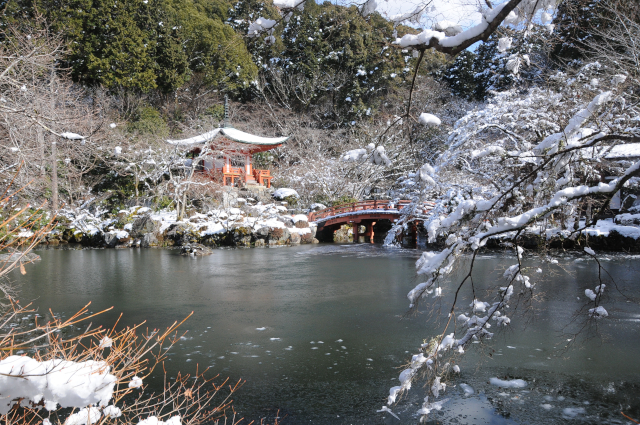
Beyond the Bentendo and its pond and garden lies the third part of Daigo-ji, called Kami-Daigo. It takes about one hour to reach it, but the views from the top of the mountain are certainly worth the hike. Furthermore, Kami-Daigo is the oldest part of the temple, and most of the buildings there are National Treasures or Important Cultural Properties. Among them is Daigo-sui, which marks the spot of Rigen Daishi’s original hermitage. The Kaisando from the Momoyama period (1606) is the largest building on Mt. Daigo. When it was first built in 911, it was dedicated to Rigen Daishi, and his statue there is from the Kamakura period.

The vast precincts of Daigo-ji make this temple a great place for hikers and people who like to explore on their own. Since Kami-Daigo takes a while to reach on foot, it does not see many visitors throughout the year, but the other areas at Shimo Daigo can get quite busy during hanami and the autumn colours.






